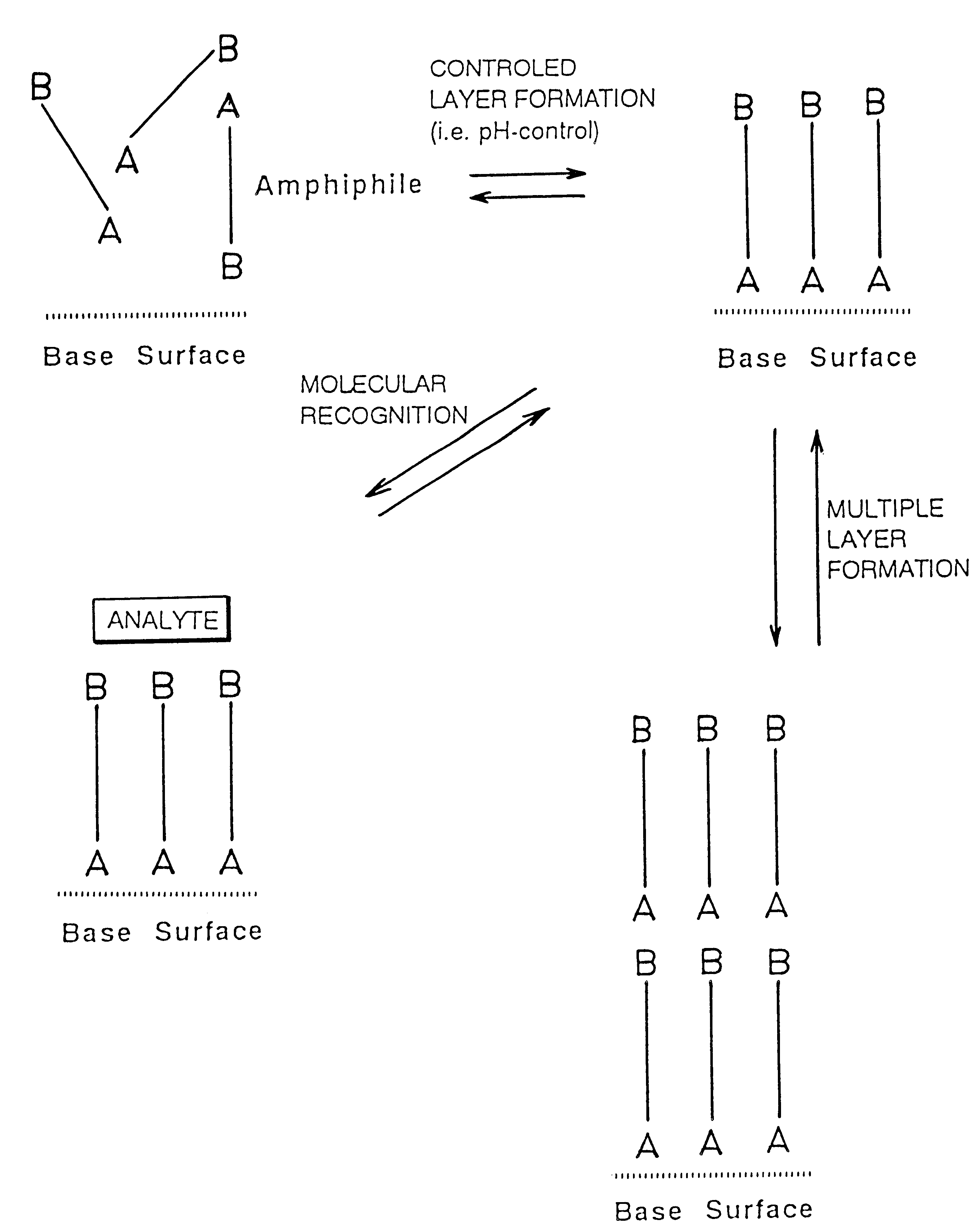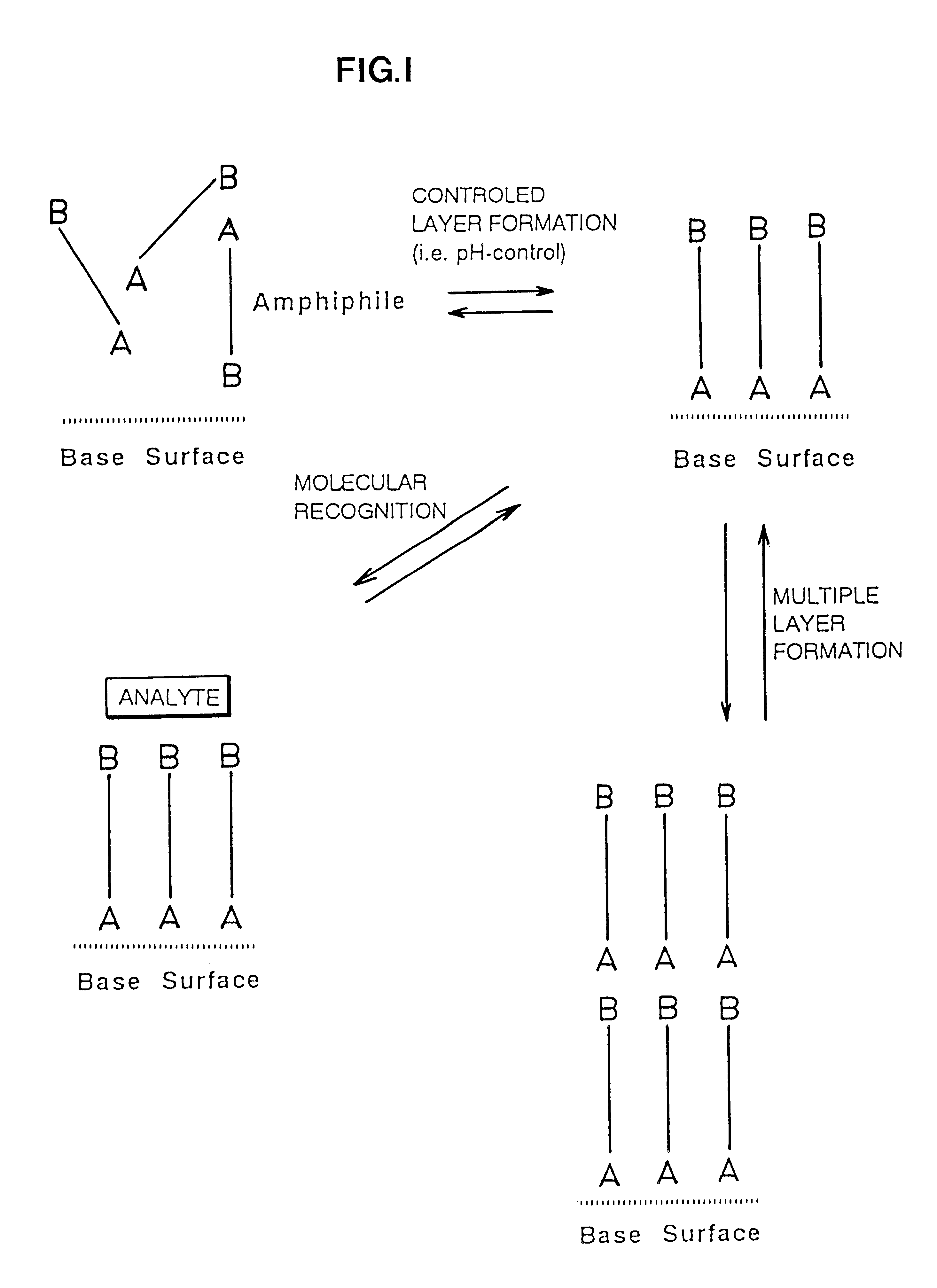Reversibly, non-covalent bound surface coating
a non-covalent bound, surface coating technology, applied in the field of surface coating, can solve the problems of limited stability of lb films, limited reusability of surfaces, and limited lb film regeneration, etc., to achieve the effect of reducing the loss of active substances and being easy to regenera
- Summary
- Abstract
- Description
- Claims
- Application Information
AI Technical Summary
Benefits of technology
Problems solved by technology
Method used
Image
Examples
example 2
The PAM-surface described in Example 1 can be removed by lowering the pH to 3 whereby the thickness decreases corresponding to the PAM layer thickness. By again increasing pH the thickness increases to the original value indicating a reversible layer formation. No increase in film thickness is seen when adding ATP or AMP at low pH.
example 3
Gold electrodes modified with mercaptopropionic acid were prepared by sorption of the thiols from an ethanol solution (Base surface). At pH 8.5 addition of the dibasic drug Pentamidine (PAM) in presence of the modified electrode produced a thickness increase of 13 .ANG.. This indicates formation of a second monolayer on top of the acid layer (PAM-surface). Addition of adenosine-triphosphate (ATP) to the PAM-surface gave an additional thickness increase of ca. 20 .ANG.. Addition of Adenosinemonophosphate gave no increase in the film thickness.
example 4
The PAM-surfaces prepared for instance as in Example 1 and 3 can be used for molecular recognition of other phosphate containing molecules (NAD cofactors, oligonucleotides, nucleotide-triphosphates, inositolphosphate, phosphoproteins etc.). For instance addition of inositoltetraphosate gave an additional thickness increase of 20 .ANG. whereas inositoldiphosphate only gave a thickness increase of ca. 10 .ANG.. Phosphorylated proteins can be analyzed in this way.
PUM
| Property | Measurement | Unit |
|---|---|---|
| tilt angle | aaaaa | aaaaa |
| thickness | aaaaa | aaaaa |
| angle of incidence | aaaaa | aaaaa |
Abstract
Description
Claims
Application Information
 Login to View More
Login to View More - R&D
- Intellectual Property
- Life Sciences
- Materials
- Tech Scout
- Unparalleled Data Quality
- Higher Quality Content
- 60% Fewer Hallucinations
Browse by: Latest US Patents, China's latest patents, Technical Efficacy Thesaurus, Application Domain, Technology Topic, Popular Technical Reports.
© 2025 PatSnap. All rights reserved.Legal|Privacy policy|Modern Slavery Act Transparency Statement|Sitemap|About US| Contact US: help@patsnap.com



